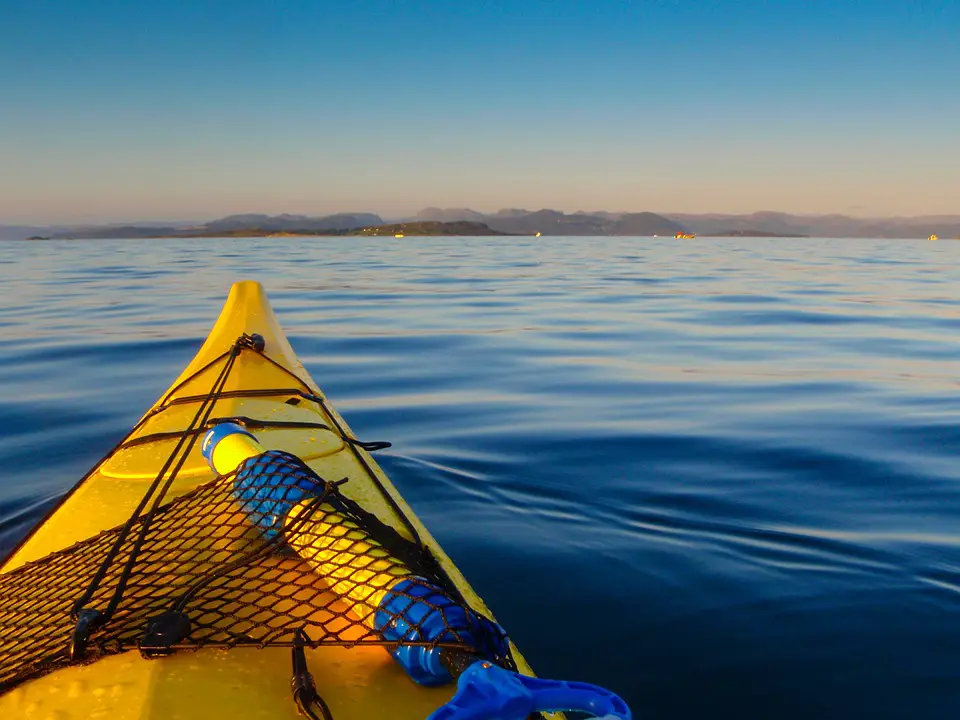Most people would have thoughts that kayaks are easy to turn over, actually, they are much more stable than they appear.
With a sit-inside kayak, most people could get worried about turning over due to difficulties gotten when getting off.

Do kayaks flip easily? The stability of the kayak varies as it depends on the hull’s design.
Do kayaks flip easily
The lengthy and narrower the hull, it loses more stability as compared to shorter and wider kayaks.
Most kayaks for recreation have a flat hull, that offers it more stability, making it difficult for the kayak to slip over.
A sit-inside’s design makes the kayaker have more control over the kayak’s stability due to the ability to sustain balance.
You achieve this with the aid of the knee against the hull sides. This makes it hard to flip over.
With a sit-inside, the kayaker’s lower body stays in the kayak and is most time sealed with a skirt.
Although, the skirt will get off easily when the kayak flips over.
The main cons of a sit-inside are that the kayak will get consumed with water during a capsize and exiting.
This makes the kayaker bail the kayak manually, and then the kayaker has to carry out a wet exit or Eskimo roll to make the kayak right.
Sit-on-tops kayaks
Sit-on-top kayaks are always designed for recreational purpose, that is they are manufactured to stay stable in water.
Most people have thoughts that paddling in a sit-on-top kayak is wobbly and unstable, though many kayaks with flat hulls are definitely difficult to tip over.
Just as a sit-inside, a kayaker could assist in stabilizing a sit-on-top with his/her legs.
Although, it is not as well as a sit-inside kayak, yet still sit-on are the most stable by design in calm waters.
As a kayaker, one will discover there is foot support on each side of the kayak, that lets one position right in the center, letting one use his/her feet for additional stability.
When one flips over on a sit-on-top kayak, such an individual will definitely fall off.
This would be a safer kind of kayak during a capsize, specifically if one is a beginner.
This suggests that one does not have to be an excellent swimmer or acquire knowledge of technical skills to survive a tip over on a sit-on-top kayak.
Have in mind that the kayak will stay afloat and much as one can grip on to it, it’s going to be just fine.
SOT (sit on top)
The paddler sits on top of the kayak, the paddlers are not closed up in the kayak, then it makes going in and getting off the kayak way easier.
The paddler is covered up in the kayak. Spray skirts could be used to make water stay off the lower part of the body.
Sit-in-kayak
The conditions of where kayaking takes place will definitely have a definite effect on how easy flipping the kayak would be, then the kind of kayak used.
If the kayaker paddles on a calm lake or inland waterway, the kayaker will definitely not come across any object that will tip the kayak over.
Sea kayaking could be a bit out of the usual and in a few cases a bit more hazardous.

Even though sea kayaks are fashioned to be definitely stable to withstand the sea’s conditions, it might be possible that a wave larger, or a sudden change in weather, might make the kayak flip.
How do I stop my kayak from flipping?
There are strong procedures one could carry out to sustain balance to make the kayak remain stable.
Maybe the most efficient of these is positioning the body. When speaking of body positioning, we talk specifically concerning the “edging” technique.
What is edging and why do you do it?
Edging is the act of positioning the kayak on the edge (on purpose, while paddling the kayak) to let the water go through beneath the kayak’s hull without holding on to it and tipping the kayak over.
Edging is definitely the irony of skiing, as a downhill skier, the rules of edging the kayak will at the beginning counter thoughts.
If one carry’s out a downhill ski (or snowboard, about that), one definitely sustains balance and stability by putting pressure on the uphill edges of the skis.
When going down the ski slope, one put’s in his/her all to maintain the center of gravity balanced over the skis.
When one loses their edge or balance, the safe way out for any individual is to fall over their backside onto the hill.
This lets the individual make use of the inside edge of the ski to reduce his/her fall from the hill (a descent now made on the individual’s posterior).
The procedure of edging the kayak is definitely the opposite of the latter.
How do you edge your kayak?
When a crosscurrent lands on the kayak, carry out these three things:
- The individual should take up his/her knee in the air.
- The kayaker should rest his/her body and downstream edge low on the water.
- Let the downstream paddle blade into the water to offer support.
Is it easier to flip a kayak or a canoe?
Certainly, a canoe is definitely difficult to capsize as to a kayak – even when they are both stable, truthfully – a kayak has the ability to be corrected on an occasion of a slip over.
Canoes surely have more stability than kayaks because of the width they possess.
Canoes are way easier to get on and get off than kayaks. Canoes possess more capacity to occupy load than kayaks and also they lift more gears.
One gets better sights of the environment on a canoe than one does on a kayak because of its higher seating position.
Will a kayak sink if it flips?
When one flips over on a sit-on-top kayak, such an individual will definitely fall off.
This would be a safer kind of kayak during a capsize, specifically if one is a beginner.
This suggests that one does not have to be an excellent swimmer or acquire knowledge of technical skills to survive a tip over on a sit-on-top kayak.
Kayaks can stay afloat and following the appropriate procedures, it is possible to correct and get into the kayak again in a few minutes.
The second one is to put on a PFD (personal floatation device). A PFD is an important part of the kayak not minding the kayaker’s destination or level of experience.